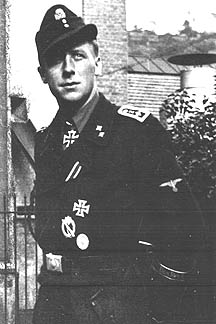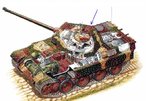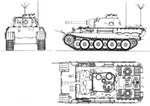- Thread starter
- #101
CharlesBronson
Senior Master Sergeant
A single hit in it and the whole thing will left a black hole in the landscape as only remain.
But you need to remember that is was only for training, note the "Fahrschule" ( driver school) sign in the glacis.
There are nearly 1,000,000 cars running with that system in here.

Panther armor.
Panther knocked out in France, 1944, the resilience of the frontal armor was truly impressive, this vehicle had at list seven 75 or 76 mm hits at the front, 4 in the glacis and 3 in the gun mantlet, the only damage visible is a rupture in the mantlet near the gun and a small penetration ( better said craking) in the lower left corner of sloped armor.

The side plates were other thing however. Panther ausf A in a dug in emplacement in Berlin, March 1945, this vehicle has been shot until extintion.
But you need to remember that is was only for training, note the "Fahrschule" ( driver school) sign in the glacis.
There are nearly 1,000,000 cars running with that system in here.

Panther armor.
Panther knocked out in France, 1944, the resilience of the frontal armor was truly impressive, this vehicle had at list seven 75 or 76 mm hits at the front, 4 in the glacis and 3 in the gun mantlet, the only damage visible is a rupture in the mantlet near the gun and a small penetration ( better said craking) in the lower left corner of sloped armor.

The side plates were other thing however. Panther ausf A in a dug in emplacement in Berlin, March 1945, this vehicle has been shot until extintion.















